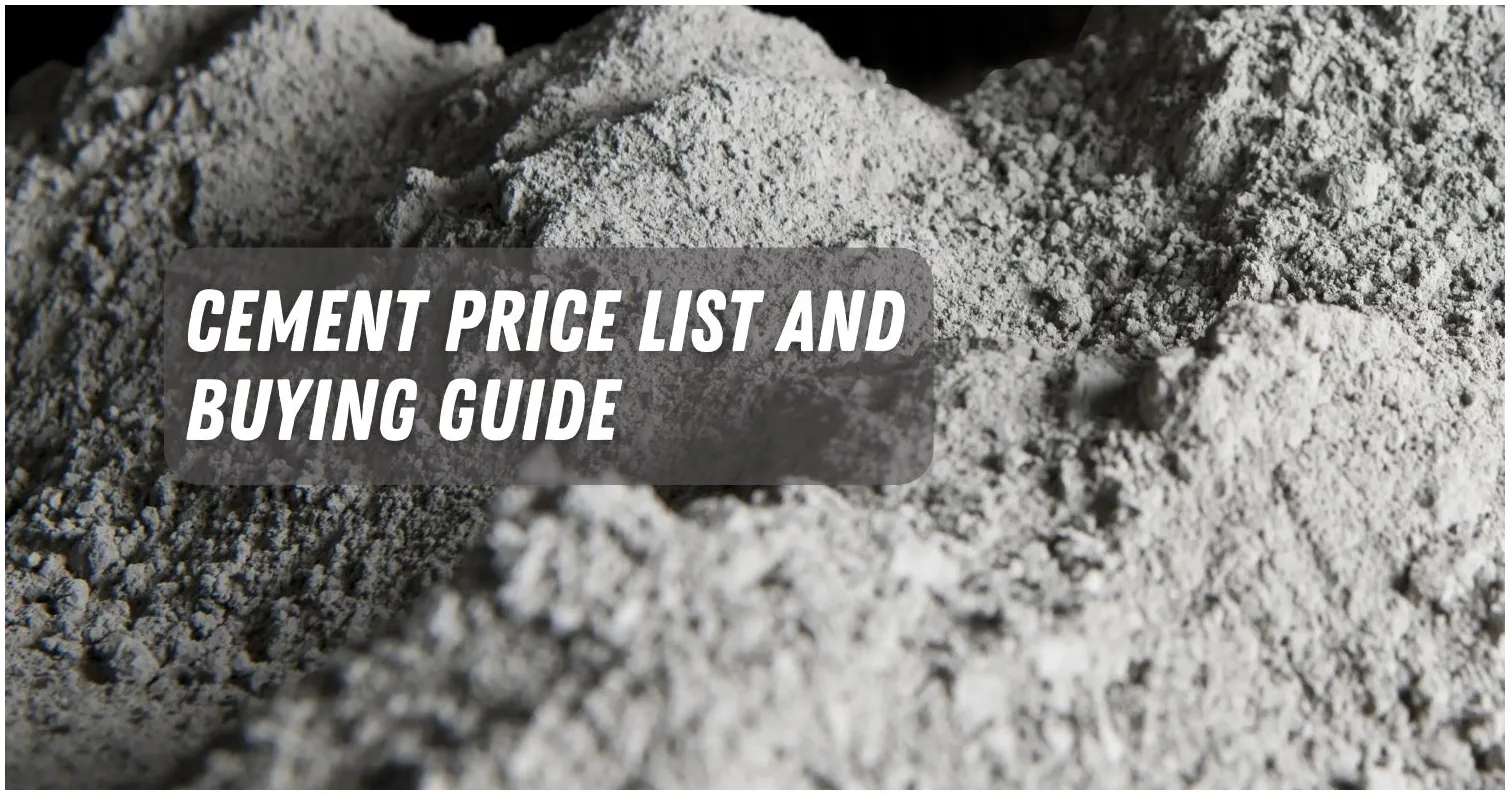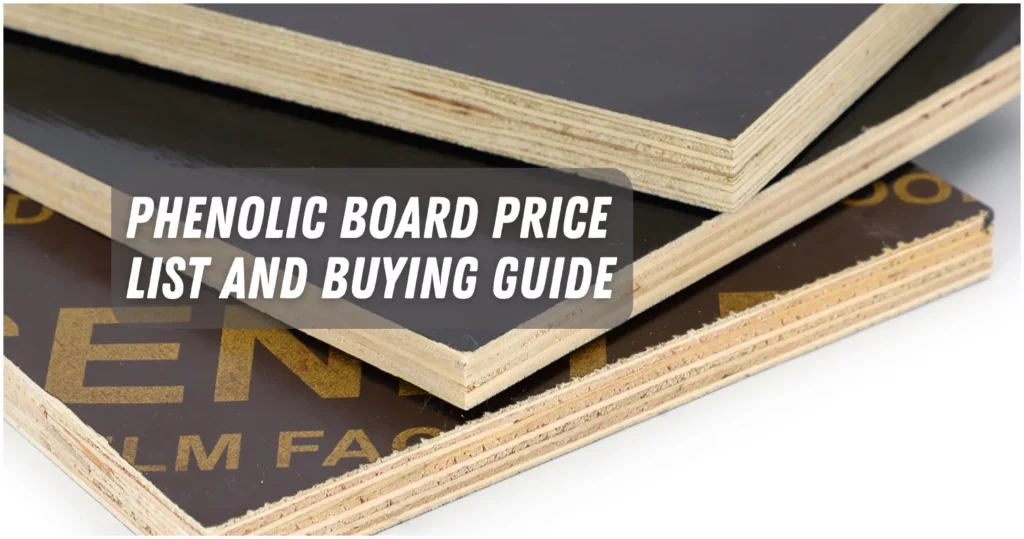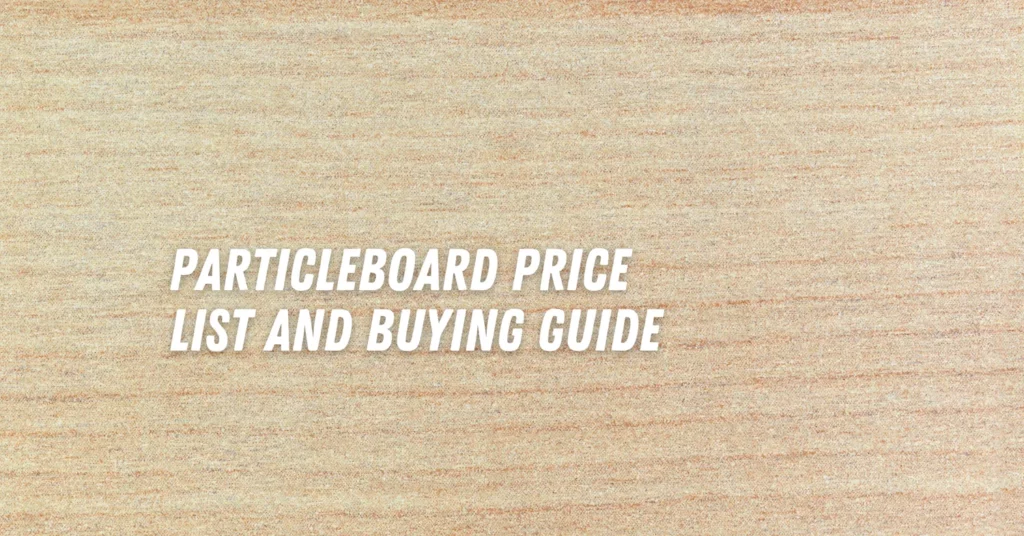Knowing cement price and type is a very important to choose building material. Cement is a key part of building projects because it is used to hold sand, gravel, and rocks together.
It is also the base for mortar and concrete. Cement has been used for hundreds of years because it can harden and set. This makes buildings stronger and last longer.
In this piece, we look at the different types of cement and how they can be used, talk about other materials that can be used instead of cement, explain how to choose the right cement for your project, and answer some of the most common questions about this important building material.
Including cement price list in Philippines, lets get down to the article:
What is Cement?

Cement is a material that can be used to hold things together and is often used in building. It is mostly used to bond and stick together things like sand, gravel, and rocks.
When cement is mixed with fine aggregate, it makes mortar for building. When cement is mixed with sand and gravel, it makes concrete. Concrete is one of the most used materials on Earth, so it is used in a wide range of building projects.
In a wider sense, the word “cement” refers to glues used in construction and civil engineering. When mixed with water, these finely ground powders form into a hard mass that gives building projects strength.
Cement has a long past that goes back to ancient times. It is now an important part of building both homes and businesses. Its ability to set and harden makes it a great glue, leading to buildings that are strong and last a long time.
Raw materials and chemical compounds, like chalk, clay, iron ore, limestone, shale, shells, silica sand, and slag, are mixed together to make cement.
Clinker is made by mixing these parts with metals and minerals like aluminum, iron, calcium, and silicon, and then heating them at high temperatures. The clinker is then ground even more into a fine gray powder called cement.
Type of Cement

There are different kinds of cement that can be used for different building projects. Here’s a quick rundown of the different kinds:
1. Ordinary Portland Cement (OPC)
This is the most popular type of cement used for building projects, mortar, and stucco. OPC also have affordable price compare to other cement.
2. Portland Pozzolana Cement (PPC)
It is more resistant to chemical reactions and is often used for bridges, piers, dams, and marine buildings.
3. Rapid-Hardening Cement
This type of cement is chosen because it is strong right away. It is perfect for projects where the formwork needs to be taken down early or when the building rate needs to be sped up.
4. Extra-Rapid-Hardening Cement:
This cement hardens and sets up even faster than rapid-hardening cement. It is often used in concrete work done in cold weather.
5. Quick-Setting Cement:
Like extra-rapid-hardening cement, it sets faster than regular Portland cement and can be used for jobs that need to be done quickly.
6. Low-Heat Cement:
This type makes less heat during the hydration process and is more resistant to sulfates. It is often used in mass concrete construction.
7. Sulfate-Resisting Cement
This cement is used for foundations, canal linings, culverts, and retaining walls. It is made to protect against damage caused by sulfates.
8. Blast Furnace Slag Cement
This type of cement is cheap and has the same qualities as regular Portland cement, which makes it a good choice for projects that need to stay on budget.
9. High-Alumina Cement
Because it has a high compressive strength and is flexible, it is used in places that get a lot of frost or where the weather is very harsh.
10. White Cement
This cement is used for decoration and doesn’t have any iron oxide in it. It is often used in building projects and artistic concrete work.
11. Colored cement
This type is made by mixing mineral dyes with regular Portland cement. It is used to add color and style to buildings.
12. Air-Entraining Cement:
This type makes the cement easier to work with and less likely to freeze. It is often used in concrete projects where low temperatures are a worry.
13. Expansive Cement:
This type of cement grows a little bit as it hardens. It is used for grouting, structural joints, and reinforcing concrete buildings.
14. Hydrographic Cement
This cement is made with chemicals that repel water. It is strong, easy to work with, and doesn’t get damaged by water. This makes it good for dams and other buildings that hold water.
15. Portland-Limestone Cement (PLC)
It is similar to regular Portland cement, but it releases less greenhouse gases, which makes it more environmentally friendly.
Aside from these specific types, there are also types like Type 1, Type 2, Type 3, Type 4, Type 5, Type 1A, Type 2A, Type 3Am, Types IL, Type GU, Type HE, Type MS, Type HS, and Type MH, which have specific uses based on their properties, such as strength, sulfate resistance, heat of hydration, and air entrainment.
These different kinds of cement are flexible and meet different building needs, making them the best choice for a wide range of projects.
Cement Alternatives

There are some various material that can be used as alternative beside cement, like these materials:
1. Pulverised Fuel Ash (PFA) or Fly Ash
PFA comes from power plants that burn coal. It can be used instead of cement when mixed with Portland Cement (Pc) in different amounts.
2. Ground Granulated Blast-furnace Slag
GGBS is a byproduct of the iron and steel business. It is mixed with Portland cement and used as a cement replacement, making it stronger and lasting longer.
3. Silica Fume
Silica fume is a waste product that comes from making silicon. It is used to make concrete, especially strong concrete or concrete that will be exposed to harsh circumstances.
4. Limestone Fines
Limestone fines can be used as a constituent of cement to make Portland limestone cement. Most of the time, it is used in amounts of 6–10% by mass of the total cementitious material.
5. Alternative Fuels
Using alternative fuels to make cement can cut down on the amount of raw materials that are needed. For example, old tires can be used as fuel and cut down on the amount of iron powder that needs to be added to cement.
Aside from these materials, researchers are also looking into Ashcrete, Recycled Plastic, Hempcrete, Ferrock (which is made from steel dust), and Mycelium (which comes from mushrooms).
These materials may be good for the climate and have unique properties that can be used in construction. Besides that some may have a cheaper price than regular cement.
As alternatives to concrete, scientists are also looking into and testing bamboo, rammed earth, timbercrete, clay, strawbale, grasscrete, cork, and wool.
Cement Used for

Cement is mostly used to hold things together when making concrete. Concrete is an important part of many kinds of building projects, such as homes, roads, bridges, schools, hospitals, dams, ports, and even aesthetic uses. It is also used to make things like bookcases, tables, and statues.
Cement is an important part of concrete. It mixes with rocks and sand to make a strong and long-lasting material. It gives the aggregates the cohesion they need to stick together, which leads to the formation of rigid structures and surfaces.
Cement Price List in Philippines
These are the price list of cement from various brand that you can get in Philippines
| Item | Size | Price |
|---|---|---|
| Eagle Cement | 1 kilogram per pack | ₱15 per kilogram |
| Rizal Portland Cement | 1 kilogram per pack | ₱15 per kilogram |
| Sahara Cement | 908 grams per pack | ₱41 per pack |
| Holcim Cement | 40 kilograms | ₱270 |
| Republic Cement | 40 kilograms | ₱320 |
The price of this cement can vary based on the brand and the size.
How To Choose The Best Cement

To pick the right cement, beside the price also think about the following:
1. Type of Cement
Choose the right type of cement for your building project. Quick Setting Cement is good for underwater structures, Rapid Hardening Cement is good for pavements, High Alumina Cement is good for high temperatures, Portland Pozzolan Cement (PPC) is often used for bridges and decorative structures, and Ordinary Portland Cement (Type 1) is good for general home construction.
2. Compressive Strength
Look for cement with a high compressive strength to make sure it can hold up to big loads. Megapascals (MPa) are used to measure strength, and bigger values show more strength. For instance, after 28 days.
3. Workability
Think about how easy it is to mix, place, and finish cement. Choose cement that is easy to work with to make sure it mixes well and avoid problems like bad packing or hard handling.
Other things to think about are:
- Cement price is important, but you shouldn’t only look at the cheapest choice.
- Choose well-known names that use modern equipment to show that they care about quality.
- Use cement within 90 days of the date it was made to get the most power out of it.
- Cement should be a uniform gray color with a hint of green. Avoid cement that looks dark green, as this could mean that there is too much lime or clay in it.
- Look for lumps in the cement, which are a sign that it has been exposed to moisture and lost some of its power.
- Cement of good quality will float on water before falling, while cement that is not clean or has too much dust will sink right away.
- Rub a small amount of cement between your fingers. If it feels smooth, it’s good grade. If the appearance is rough or gritty, there may be too much sand.
- Test the temperature by touching the cement. It should feel cool and dry. If it feels warm, you might want to get a new one.
- Test the strength by putting a cement block in water and putting weight on it. If the block stays together without cracks, that means the cement is good.
- Cement shouldn’t have a smell. If something smells like dirt, it may have too much clay and sand.
- Make a cement cake and put it in water for 24 hours to test how thick it is. The cement is of good quality if it stays in its shape without cracks or rough edges.
When choosing the right type of cement for your building job, you should think about how it will be used.
FAQ (Frequently Asked Question) about Cement
What does cement come from?
Cement is a fine, soft powder that hardens when it comes in touch with water. It is used as a glue. It is made by burning limestone and clay and then grinding them into a powder.
What does it mean to say that cement is?
Cement is a chemical substance used in building that sets, hardens, and sticks to other materials to hold them together.
What else can you do with cement?
Cement is mostly used as a binding agent in concrete, which is used to build houses, roads, schools, hospitals, dams, ports, and other types of buildings, as well as decorative patios, floors, stairs, driveways, pool decks, and other things like tables, sculptures, and bookcases.
What is cement? What’s concrete?
Aggregates and paste are what make up concrete. Sand, gravel, or broken stone make up the aggregates, and water and portland cement make up the paste. Cement makes up 10–15 percent of the amount of the concrete mix. Through a process called hydration, the cement and water harden and join the aggregates together into a rock-like mass.
Is cement a natural material?
But cement isn’t some kind of natural biological material. It’s made by mixing 8 main ingredients together chemically during the cement production process. Most of the time, limestone, clay, marl, shale, sand, chalk, bauxite, and iron ore are used to get these ingredients.
Where do they make cement?
A cement mill grinds the clinker into a fine powder, which is then mixed with gypsum to make cement. The powdered cement is then mixed with water and rocks to make the building material concrete.
What does “cement” mean?
(The word “cement” comes from the Latin word “caementum,” which meant stone chips like those used in Roman mortar, not the binding material itself.)
How do you make cement?
Portland cement is made in four steps: 1) crushing and grinding the raw materials, 2) mixing the materials in the right amounts, 3) burning the prepared mix in a kiln, and 4) grinding the burned product, called “clinker,” along with about 5% gypsum (to control the time of setting).
What makes cement a good substance?
Concrete is a strong, long-lasting material because it doesn’t bend. It is fairly resistant to erosion, fire, rotting, rusting, and weathering, so it doesn’t need much care or repair. So, concrete has a longer lifespan than most other building materials.
Where do people usually use cement?
It is used in marine structures, foundations, sewage works, and laying concrete underground for things like bridges, piers, dams, and mass concrete works, among other things.
That was some information you need to know about the list of cement prices and buying tips.
The information on this price list should help you choose the right cement for your needs.
[ratings]

